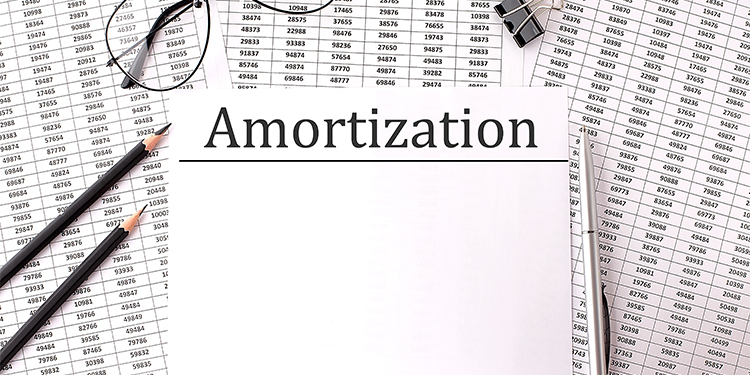
What Is Amortization in EBITDA?
Before selling or buying a business, you need to value it. EBITDA reflects a company’s profitability and can provide a clear picture of a company’s value and be a starting point for negotiation.
Every business buyer or seller should be acquainted with EBITDA, including one of its key components—amortization.
Discover below why EBITDA is crucial in business valuation and what business owners should know about amortization.
What Is EBITDA?
EBITDA is an acronym for earnings before interest, taxes, depreciation and amortization. Just as the name implies, EBITDA is a measure of a company’s financial performance.
EBITDA reflects a company’s operating profit before charging interest, taxes, depreciation, and amortization.
One may consider EBITDA a raw, unfiltered version of net income.
Since EBITDA does not include certain expenses, specifically interest, tax, and depreciation, it’s invariably bigger than net income.
Why EBITDA Is Important
Experts believe EBITDA more accurately reflects the results of business operations and operating income. This is because interest expenses, taxes, and amortization are not operating expenses (the expenses necessary to run a business).
Interest expense, for instance, relates to the financing activities of a business, not operations.
Some also prefer EBITDA because it more closely represents a company’s cash profit. This is because both depreciation expense and amortization expense are non-cash expenses.
When Is EBITDA used?
While business owners may use EBITDA to assess the financial outcome of operating decisions, EBITDA is commonly used in business valuations.
EBITDA provides a clearer perspective of a company's operational performance by eliminating the effect of non-operating items, such as interest, amortization, and tax expenses.
Still, EBITDA is not the only valuation metric.
Other Metrics Used to Value a Business
Other metrics used to value a small to medium-sized business include:
- Book Value
- Earnings Multiplies
- Revenue Multiples
- Enterprise Value
What Is Amortization in EBITDA?
To know your EBITDA, you will need to figure out the “A,” the last letter of the acronym.
In accounting, amortization is the practice of reducing the cost of an intangible asset over its remaining useful life.
For clarity, intangible assets may not be physical, but still have significant economic value. Think of intellectual property like trademarks, patents, and copyrights.
Because intangible assets are initially recorded on the balance sheet, the cost of purchasing or developing them needs to be recorded as an expense to accurately calculate a company’s net income.
How Is Amortization Calculated?
To amortize means to charge a portion of an intangible asset's value to the income statement and reduce income.
Before you amortize an intangible asset, you need to first find the asset’s value and its remaining useful life.
After this, you simply divide the former (the value of an intangible asset) by the latter (the asset’s remaining useful life).
The calculated amount is the amortization figure and should be charged as an expense to the company’s income statement.
When performing EBITDA valuations, businesses eliminate the effect of amortization expense by adding it back to the net income.
Why It Is Necessary to Include Amortization in the EBITDA Calculation
Remember, EBITDA aims to find a measure of financial performance that more closely and directly mirrors the results of business operations.
Amortization expenses, such as a portion of a copyright, are unnecessary for business operations. Put differently, the business is not obliged to incur these expenses to operate. Because of their non-operational nature, amortization expenses need to be eliminated.
But it’s not just amortization expense.
Other Components of EBITDA
The following are the other components of EBITDA considered in valuation. Like amortization expenses, these expenses are “add-backs” to income to eliminate the effect of non-operating items.
- Interest: This refers to interest payments on loans or lines of credit.
- Taxes: Unlike payroll or excise taxes, the corporate income tax is regarded as a non-operating item and added back when performing EBITDA valuation.
- Depreciation: Similar to amortization, depreciation is the reduction of a physical asset’s (also called fixed assets) value over its useful life.
The primary difference between depreciation and amortization is that depreciation is used for tangible assets (such as computers), while amortization is used for intangible assets (such as computer software).
The Bottom Line on the Effects of Amortization on EBITDA
Amortization expenses reduce net profit. However, in EBITDA valuations, they are added back. Sellers may be happy with this because adding back amortization results in a rosier financial picture and may persuade buyers to offer a higher price.
And the moderating effect of EBITDA may satisfy buyers because companies with many intangible assets will not be disadvantaged or valued unfavorably.
Still, other factors often come into play, including customer concentration, quality of leadership, and the company’s operations. That’s why you may want to hire valuation professionals and CPAs to value your business before listing it for sale. Visit the BizQuest Broker Directory to find a professional that can help you value your business for sale.
BizQuest has many tools and resources to help you get started on valuing a business, whether you’re buying, selling, or just looking for a valuation benchmark.





